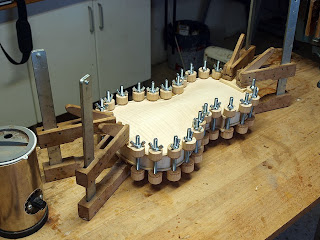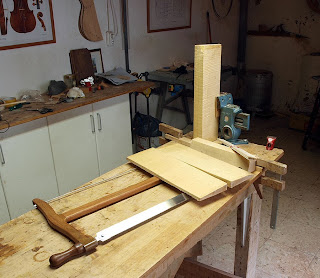Just something I wrote on a forum:
A guy wrote that Brazilian Rosewood was amazing, so I wrote this:
Yes, everything around Brazil rosewood
is AMAZING.
Most of all, I find it to be AMAZING
that builders still use it and that players buy new guitars made with
braz rosewood. I´ll explain:
First of all, the myth
concerning braz rosewood is about Rio rosewood or rio palisander
(Dalberghia Nigra) and nothing else. The rest is just brownish heavy
wood from South America.
its AMAZINGLY illegal. Its been
forbidden for decades to chop the trees. And you can only buy the
wood legally if it has papers (CITES) Also you can only sell guitars
legally legally if it has papers. Try importing a guitar to the USA
with Braz rosewood and no CITES and you´ll find out.
You can of course think that you dont
care about the environmental situation in Brazil and you can also
think that you dont care about these laws and rules. BUT then,
please, accept that you cant care about environmental issues where
you live and you cant expect people to follow the laws and rules that
you find to be important.
There´s an amazing amount of
cheating going on when it comes to Braz rosewood and its on all
levels including wood cutters, wood dealers and musical instrument
makers. All kinds of brownish wood from South America can be found
and sold as Braz rosewood.
I know about makers that even though
they bought wood called “Caviuna”, they made and sold guitars and
said it was Braz rosewood.
Very few persons know how to
distinguish the real thing from all the fake. Those of us who have
only had a few sets in our hands, we know nothing and can just pray
that we havent been cheated and that some dude who bought our Braz
rosewood guitar wont send us a lawsuit if its found out that it was
Jacaranda or Caviuna we sold under a false name.
Even the specialists find it hard to to
distinguish the real thing from fake. Not so many years ago, Maderas
Barber in Valencia sold a very pretty wood called Caviuna. It totally
looked like high grade Braz rosewood with spider webbing and a deep
chocolate color. The authorities blocked the sale of the wood while
they were taking DNA tests of the wood. They found out that it was
NOT Braz rosewood, so at least Bareber had not been wrong, but it
only shows how difficult it is even for experts to see the
difference.
I´ve made 3 Braz rosewood guitars and
I wont make more. It should be obvious why. The wood I bought pretty
cheap on a sale that California based Allied Luhiery had almost 10
years ago. I took the sets to a well known builder who had built
several guitars with Braz (Rio) rosewood back in the “good old
days”. He told me he coundnt say 100% what it was, but he was
pretty sure it was Rio. Allied sold it as “Stump Wood” claiming
it didn´t need CITES, but the wood arrived without any papers saying
that, so judge yourselves. I just know that the different custom
authorities dont care at all about stories. They want paper and
nothing else. No correct papers, and you´re out.
Besides that, Braz rosewood is a nice
tonewood, but its just a piece of wood and there´s absolutely
nothing magical about it. I dont even think its better than many
other tonewoods. Its pretty heavy, which I personally dont like to
much for flamencos, and its VERY unstable.
To be totally honest, I find it to be a piece of
wood for the guitar snobs. Those who think they are so extremely
important persons that only the most extreme piece of wood is good
enough for them. You know these kind of guys who cant accept to drive
a Ford or a Toyota when they go to work, but something a lot “finer”.


















































